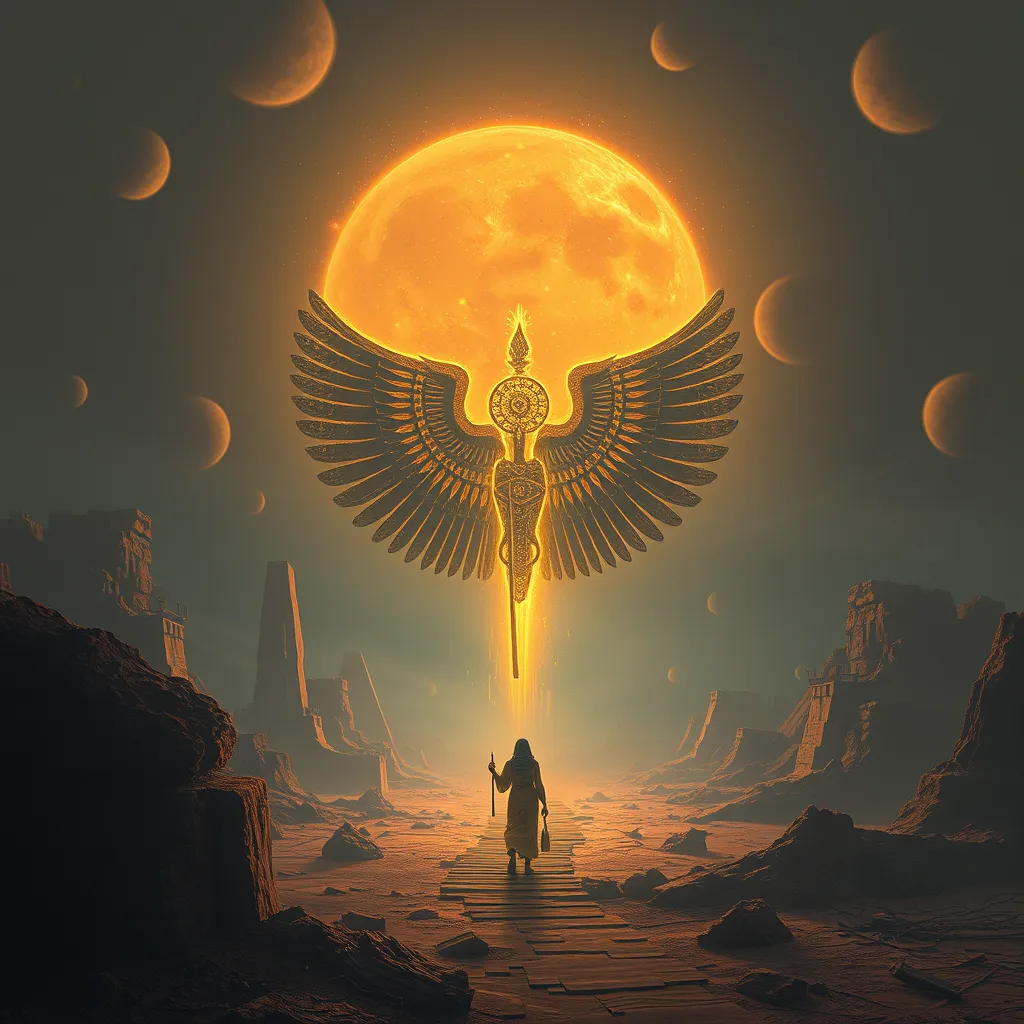The Duat: A Chronicle of the Dead
I. Introduction to the Duat
The Duat, often referred to as the ancient Egyptian underworld, was a vast and complex realm that held great significance in the beliefs surrounding death and the afterlife. It was not merely a destination for souls but a crucial part of the belief system that defined the journey after death. The ancient Egyptians viewed the Duat as a place where the dead would navigate through challenges and trials, ultimately leading to the judgment of their souls.
The concept of the afterlife in Egyptian mythology was deeply intertwined with the notion of ma’at, or cosmic order. The Duat was essential in this framework, representing both the trials of the deceased and the promise of eventual rebirth. This duality made it a powerful symbol of both fear and hope in ancient Egyptian culture.
II. The Structure of the Duat
The Duat was often depicted as a complex landscape filled with various regions, each symbolizing different aspects of existence and the afterlife. Its geographic description was rich in symbolism, as it was thought to include rivers, mountains, and other features that reflected the journey of the soul.
Some key realms and regions within the Duat included:
- The Field of Reeds: A paradise for the righteous, resembling a lush, fertile landscape.
- The Hall of Judgment: The place where souls faced Osiris for the weighing of the heart.
- The Lake of Fire: A treacherous area where souls who failed the judgment faced punishment.
III. Deities of the Duat
Central to the Duat’s function were several deities, each playing a vital role in the journey of the soul. The most notable among them was Osiris, the god of the afterlife, who ruled over the Duat and ensured the proper judgment of souls.
Other important deities included:
- Anubis: The god of embalming and the protector of graves, guiding souls through the Duat.
- Ma’at: The personification of truth and justice, who presided over the weighing of the heart ceremony.
- Thoth: The god of wisdom and writing, who recorded the outcomes of the judgment.
These gods held the responsibility of guiding the souls and ensuring the balance of order in the afterlife, reflecting the importance of divine oversight in the journey to the Duat.
IV. The Journey of the Soul
The journey of the soul through the Duat began at the moment of death. Upon passing, the soul would depart from the body and enter the realm of the dead, where it faced numerous challenges and trials.
Some of the key aspects of this journey included:
- The Departure: The soul’s initial separation from the body, marked by rituals and prayers.
- Trials and Temptations: The soul encountered various obstacles, including dangerous creatures and deceptive spirits.
- The Weighing of the Heart: A critical ceremony where the heart of the deceased was weighed against the feather of Ma’at to determine their fate.
V. Iconography and Texts Related to the Duat
Much of what we know about the Duat comes from ancient texts and iconography, particularly the Book of the Dead. This collection of spells and illustrations served as a guide for the deceased, providing instructions and protections for their journey.
Key elements included:
- Spells: Specific incantations designed to assist the soul in overcoming challenges.
- Illustrations: Iconographic representations of the Duat, depicting the various realms and deities.
Tomb paintings and artifacts also played a significant role in depicting the Duat, providing insights into how the ancient Egyptians envisioned the afterlife. These materials were crucial for understanding the beliefs and practices surrounding death and the afterlife.
VI. The Duat in Funerary Practices
Funerary practices in ancient Egypt were closely connected to the Duat, as they aimed to ensure a successful journey for the deceased. Burial rituals were elaborate and often included a variety of items meant to assist the soul in the afterlife.
Key practices included:
- Burial Rituals: Various ceremonies were conducted to prepare the deceased for their journey to the Duat.
- Offerings and Inscriptions: Food, goods, and inscriptions were left for the deceased to use in the afterlife.
- Mummification: The preservation of the body was believed to be essential for the soul’s survival and recognition in the Duat.
VII. Cultural Impact and Legacy of the Duat
The Duat has had a lasting impact on various aspects of culture and spirituality beyond ancient Egypt. Its themes of death, judgment, and the afterlife resonate in many world religions.
Some influences include:
- Later Religions: Concepts of heaven, hell, and judgment in Christianity and Islam show echoes of the Duat.
- Modern Interpretations: The Duat continues to inspire literature, art, and film, reflecting humanity’s enduring fascination with the afterlife.
- Archaeological Exploration: Ongoing research in Egyptology seeks to uncover more about the beliefs and practices related to the Duat.
VIII. Conclusion
The Duat stands as a testament to the ancient Egyptian culture’s rich beliefs surrounding death and the afterlife. It encapsulated their understanding of mortality, judgment, and the hope for rebirth. The complex structure of the Duat, its deities, and the journey of the soul reflect a profound engagement with existential questions that still resonate today.
As we continue to explore the intricacies of the Duat and its significance, we are reminded of the universal human fascination with what lies beyond death—a theme that remains as relevant today as it was in ancient times.





